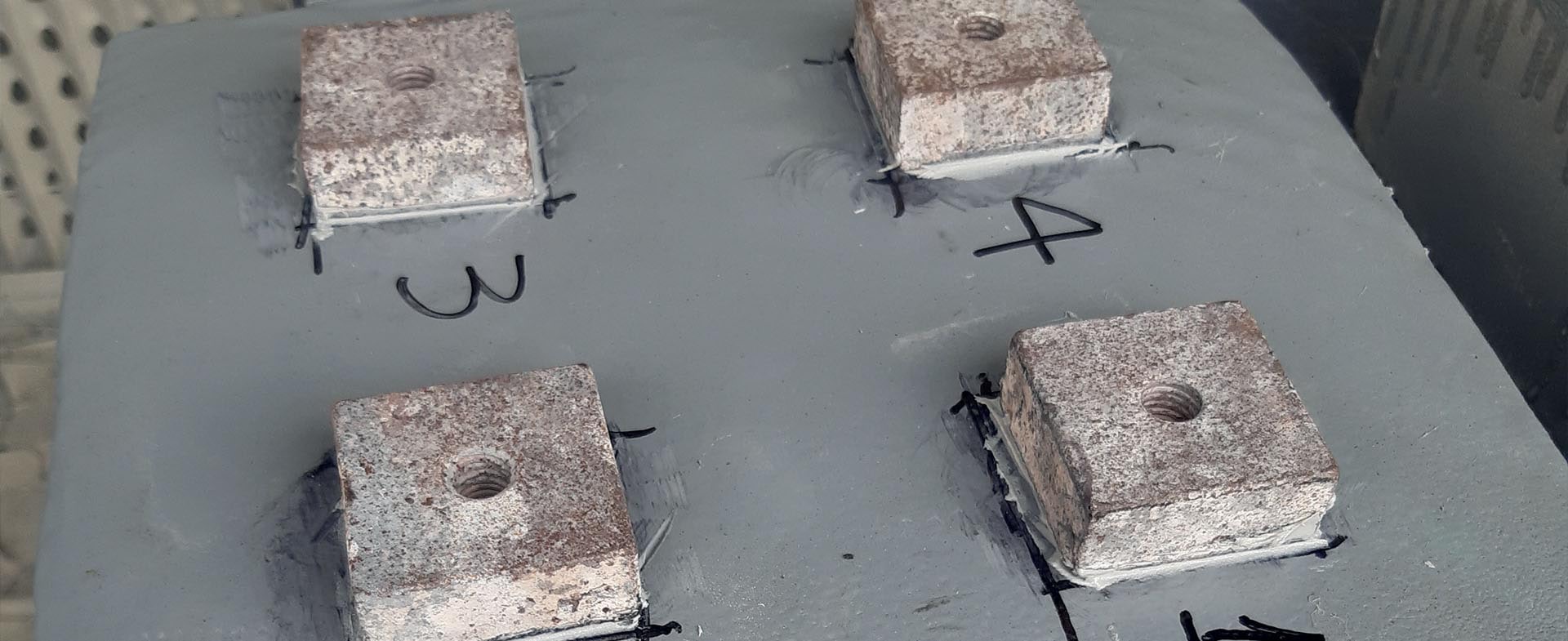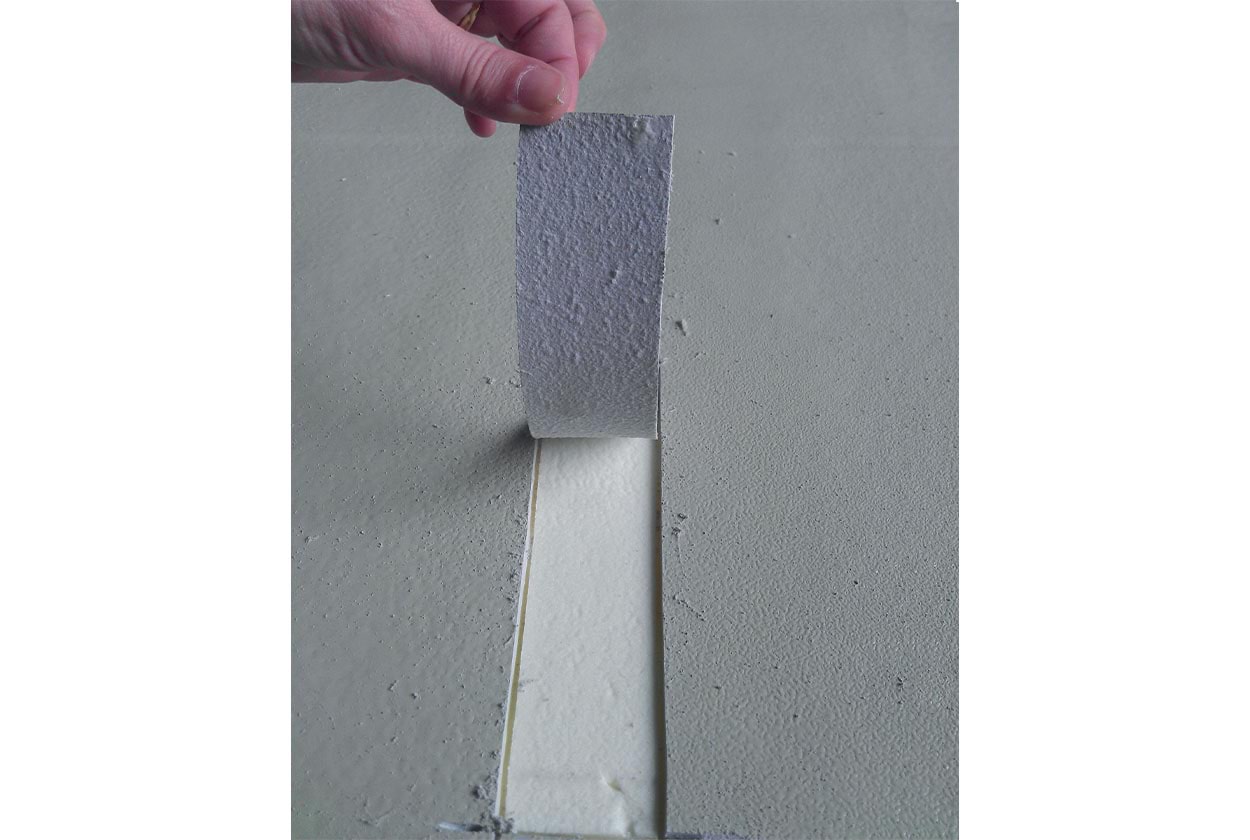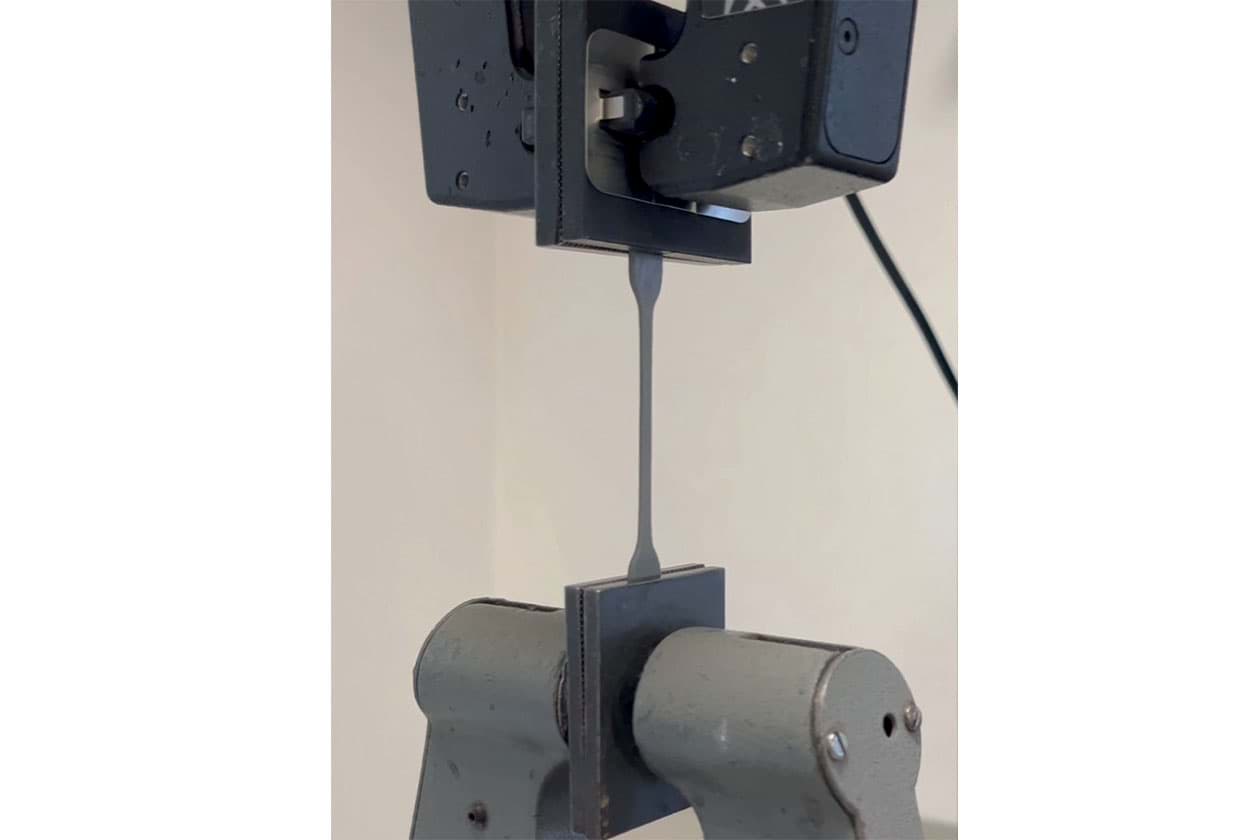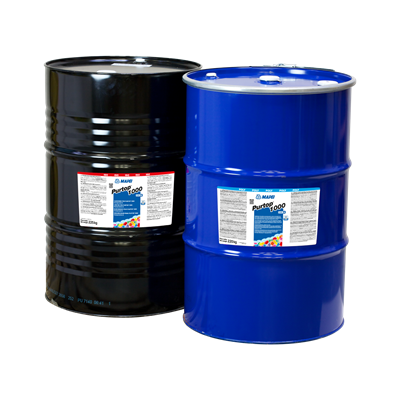

The strong points of a truly unique product
Short curing time, high flexibility and excellent mechanical performances are some of the advantages of polyurea membranes
Antonio Ausilio talks about the Research & Development work that Mapei Laboratories carried out to develop the PURTOP waterproofing membranes
Even though the reaction between isocyanates and amines (that is, the reaction that leads to the formation of a polyurea) has been well known for many years, it was only in the 1980’s that people started to think about its possible uses in developing products aimed at the building industry.
The reluctance to take into consideration this technology derives from its extremely short reaction time (generally just a few seconds) which still characterises it to this day and which, being quite a strong impediment to its use in the formulation of products applied manually, for a very long time directed research towards the study of other polymers, first and foremost polyurethanes. However, at the start of the 1990’s, the considerable benefits associated with the use of a polyurea led to the development of special, sophisticated pumps. These pumps were so efficient in handling the extremely short curing time of the product that it was no longer considered an almost insurmountable barrier and it became one of the benefits most associated with polyurea.
"The reluctance to use polyurea for developing waterproofing membranes derives from its short curing time. This problem was overcome in the early 1990s with the introduction of sophisticated pumps"
In fact, the very high curing speed of a polyurea membrane guarantees it may be applied quickly which, in practical terms, means that waterproofed surfaces may be put into service after just a few hours.
However, what makes a polyurea-based membrane such a truly unique product on the market is its particular mechanical characteristics. In fact, when you need to increase the flexibility of a product, you have to inevitably lower its cross-linking density by using molecules with a high molecular weight and low functionality. In most polymers, these formula’s adjustments also lead to a general lowering of other properties of a product, such as tensile strength and tear strength, but not with a polyurea-based product. Even with membranes that have an elongation rate of more than 300% (which is the minimum elongation rate of every spray-applied polyurea from the PURTOP line), both tensile strength and tear strength remain far higher than with other membranes with same degree of elasticity, but made using different technology. The reason why this occurs with a polyurea, and not with other polymers, depends on the different molecular interactions that originate following the reaction between isocyanates and amines, especially those leading to the formation of a particular electrostatic bond called a hydrogen bond.
The number of hydrogen bonds that originate between the various polyurea chains is considerably higher than those obtainable with flexible polymers of a different nature, but to explain in an easier way how this difference can affect the final characteristics of the products, we can use an example which is very easy to understand, such as the comparison between water and methane. The molecules of these two substances are very similar in size and both have a very low molecular weight and, because of this latter characteristic, in theory, at ambient temperature both methane and water should be at a gaseous state. In reality this only occurs with methane, while to take water to its gaseous state it’s necessary to overcome 100°C. This considerable difference in behaviour between the two substances depends precisely on the hydrogen bonds that water is able to form, creating a network that links the various molecules together and stops them from evaporating, while with methane this does not take place.
If we transfer this concept to polyureas and use polyurethanes as a comparison (which are the polymers chemically most similar to polyurea), with all other factors being equal, the higher number of hydrogen bonds that form between urea groups compared to those that form between urethane groups (which basically means a more extensive network in the polyurea chains) is the only explanation to justify the considerably higher mechanical characteristics of a polyurea membrane compared with those of a polyurethane membrane.

What is more, remaining in parallel between these two technologies, it is important to underline another advantage of the polyureas compared with the polyurethanes which depends, once again, on the extreme reactivity between usocyanates and amines. A urethane group forms by the reaction between an isocyanate and an alcohol. Alcohol molecules, however, are chemically similar to water molecules and so, in the presence of moisture, not only do isocyanates react with alcohol, they also tend to react with water. In many applications in which polyurethanes are involved (excluding the single component products where the reaction with water is fundamental) this reaction can be a problem, in that it generates carbon dioxide, a gas that can lead to the formation of surface blisters during the curing phase. This does not happen with polyurea, because the difference in reactivity between amines and water with respect to isocyanates is such that, in the presence of moisture, isocyanates react exclusively with amines.

Using a polyurea membrane on small surfaces
Even though the very high curing rate of polyurea is an advantage when you need to waterproof very large surfaces, it becomes an obstacle in those cases in which the surfaces to be waterproofed are much smaller, because using such a sophisticated pump would not be cost effective, as well as very unwieldly. However, looking more deeply into the chemistry of the substances used in this technology, we were able to understand that, by carefully selecting amines that were less reactive, it would be possible to formulate a type of polyurea suitable for manual application. And this was exactly the concept behind the development of PURTOP 200. What is more, not only does this product have far better performance properties than any other liquid membrane currently available on the market, but its formula contains no solvent, thereby also making it a product with very low emissions.

Polyurethane-polyurea hybrids
The mechanical characteristics of a polyurea membranes make this product suitable for applications in quite severe conditions. Amongst other properties, it performs excellently as crack-bridging coating in carparks where vehicles transit and guarantees excellent resistance when in continuous contact with a host of aggressive chemical substances.
If, however, it is mainly used as a waterproofing membrane, the performance characteristics of a polyurea could even seem to be excessive. With this in mind, in order to offer clients a product at a more accessible price, over the years we have developed polyurethane-polyurea hybrids whose characteristics are defined according to applications where only some of the advantages offered by polyurea are really necessary. However, as we mentioned previously, the reaction between isocyanates and alcohol is quite slow. So, in order to have the same reaction speed as that between isocyanates and amines, it is necessary to add a catalyst in the formula of a hybrid polyurethane-polyurea. This catalyst, however, is unable to distinguish between alcohol and water, which means that with polyurethane-polyurea hybrids, adding a catalyst could lead to the formation of surface blisters. So, formulating a polyurethane-polyurea hybrid is more complicated than formulating a pure polyurea one.
In spite of this, thanks to intense research work and by carefully selecting which substances to use, we have been able to make this problem become rather unimportant and the resulting product, PURTOP 500N, is now widely used in countries with a particularly damp climate for a large part of the year, such as Singapore and Hong Kong.
We then need to highlight that the possibility of generating these various types of hybrids has acted as a stimulus for us to study new solutions for even more complex problems. One clear example of this is PURTOP FR, a polyurethane-polyurea hybrid which, thanks to specific chemical modifications which have considerably improved its reaction to fire, has been classified as D-s3-d0 according to European standard EN 13501-1 and BROOF t1, t2, t3 and t4 according to European standard EN 13501-5. Thanks to this characteristic, the membrane is taking a larger slice of the market, in line with the increasing adoption of photovoltaic panels, whose use has led to more restrictive regulations in terms of reaction to fire.

Protecting the membranes with aliphatic top coats
Such frequent use of polyurea or polyurethane-polyurea hybrids as waterproofing membranes for roofs requires that these materials, first and foremost, do not degrade due to their exposure to UV rays and the effect of thermal oxidation. It is true to say, however, that the polymer network itself guarantees exceptional mechanical characteristics and is able to make such degradation (which shows as progressive yellowing of the membrane and a tendency of the material to “chalk”) very slow without being particularly penalising from a performance perspective.
Having said that, if aesthetics are an important requirement, the membrane needs to be protected using an aliphatic top coat. These products are, by their very nature, highly resistant to UV rays (unlike PURTOP products, which, instead, are aromatic-based) so, even when applied in thin layers (150-200 µm), they help the surface of the membrane remain unchanged for very long periods. Mapei proposes various aliphatic top coats for its polyurea products, which differ according to the type of application. If, for example, a membrane just needs simple protection and it does not have to withstand any stresses, the best compromise from a cost/benefit perspective is MAPECOAT PU 20N.
Alternatively, if the surface to be waterproofed has to withstand vehicles in transit, such as in a carpark, a top coat with higher mechanical properties should be specified, such as MAPECOAT PU 30N.
And lastly, if products that release very low amounts of solvent are required, it is possible to use MAPEFLOOR FINISH 59W, a water-based top coat which, thanks to its flexibility, is also able to withstand any movements of the membrane.
Developments regarding the use of polyurea in the building industry sector are constantly evolving. From our side, we could continue the discussion by mentioning the studies we have ongoing to develop aliphatic polyureas and polyureas with a high content of renewable substances. These, however, are products that are still at an experimental stage and further work needs to be carried out on their formulations, but although they are a clear evidence of our incessant desire to innovate, which has always been the driver behind Research & Development activities in the Mapei laboratories.
















